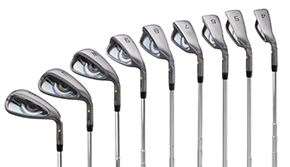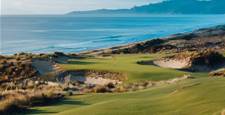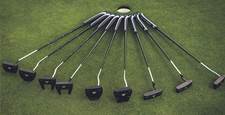Looking for some new equipment to lift your game in the New Year? Here is some of the gear Ping has available heading in 2016.
Looking for some new equipment to lift your game in the New Year? Here is some of the gear Ping has available heading in 2016.
The G30 series includes two driver options – standard and SF Tec (Straight Flight Technology) – along with fairway woods, hybrids and irons.
“With the G30 series, our engineers once again accomplished something that is unique to Ping products – they elevated performance significantly in key areas without sacrificing other important attributes,” said John A. Solheim, Ping’s chairman and chief executive. “Across the product line, we’ve proved you can hit the ball higher and farther while increasing forgiveness and control. We’ve also continued our focus on advancing custom fitting in the driver and fairway woods by offering five loft positions. All of this promotes the consistent, reliable results that will help golfers of any skill level shoot lower scores and enjoy the game more.”
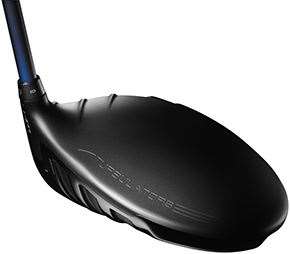 The most visible innovation on the G30 driver is the patented turbulators engineered onto the crown. Inspired by the aeronautics and sporting industries that put a premium on speed, Turbulator Technology reduces aerodynamic drag by significantly delaying airflow separation, maintaining attached airflow around the clubhead as it approaches impact, leading to more speed.
The most visible innovation on the G30 driver is the patented turbulators engineered onto the crown. Inspired by the aeronautics and sporting industries that put a premium on speed, Turbulator Technology reduces aerodynamic drag by significantly delaying airflow separation, maintaining attached airflow around the clubhead as it approaches impact, leading to more speed.
“The turbulators are really exciting,” Solheim said. “Wind-tunnel testing verified with clarity the role they play in reducing drag on the driver head, but its real benefit was confirmed through our player testing. When Bubba Watson first tested the turbulators, he picked up two miles per hour in clubhead speed and four miles per hour in ball speed, which meant ten more yards for him. We can’t promise that for everyone, but with the turbulators’ powerful, inspiring look we’re confident all golfers will be longer off the tee, thanks to Turbulator Technology.”
The entire G30 series benefits from new face technologies and materials, including the introduction of T9S titanium in the drivers, which results in thinner faces and weight savings that help position the centre of gravity low and back. The fairway woods utilise a high-strength Carpenter 475 steel in the face, and the hybrids are heat-treated with an H900 process. Both result in hotter, more forgiving faces. The G30 iron face is thinner for higher ball speeds while being stabilised by a new custom tuning port design for predictable distance control.
The G30 SF Tec driver option is engineered for players whose shots typically end up right of the intended target. In player testing, the G30 SF Tec driver, which features weight closer to the heel and lighter swingweights, improved shot bend by 12 yards when compared to the G30 standard driver.
Ping has also increased the range of adjustability to five loft positions in the driver and fairway woods while maintaining the same mass and outer diameter as the company’s fixed hosels, providing the benefits of adjustability with no sacrifice in performance. The lightweight hosel allows golfers to increase or decrease loft six-tenths of a degree or one full degree to optimise launch conditions.
Turbulators on the crown of the 460cc Ti 8-1-1 head reduce aerodynamic drag, leading to faster clubhead speed and ball velocity for long, accurate drives. Turbulators also assist with aim and alignment. The higher strength/weight ratio of the T9S face material allows for a thinner, hotter face and saves four grams. The weight savings are allocated to help position the centre of gravity lower and farther back than any Ping driver to date, ensuring high launch and optimised spin with a high moment of inertia. SF Tec heads promote a right-to-left ball flight for players whose shots typically end up right of the target. To optimise launch angle and spin, golfers can add or subtract up to one degree of loft using Trajectory Tuning+ Technology. A high-balance-point TFC 419D shaft has a centre of gravity closer to the grip end, promoting a simultaneous increase in energy, momentum and inertia. The custom tuning port can accommodate a range of fitting weights and allows Ping to achieve the desired swing weight across a variety of proprietary and after-market shafts.
- Lofts 9° and 10.5° in standard head, 10° and 12° in SF Tec head (adjustable +/- 6/10 or one degree).
- Stock graphite shaft: Ping TFC 419D (soft R, R, S and X).
- Standard length 45.75 inches, D3, 206 grams (standard); D1, 203 grams (SF Tec), 460cc.
RRP: $610 (or $650 with a Tour shaft).
G30 LS Tec (Low-Spin Technology) driver
“With the addition of the LS Tec, all golfers now have a G30 driver fit for their game,” said John A. Solheim, Ping’s chairman and chief executive. “It’s engineered with less spin and an extremely high moment of inertia to deliver the industry-leading distance and accuracy of the standard G30 driver. Our engineers met the difficult challenge of reducing spin while maintaining forgiveness across the face.”
A sole weight positions the centre of gravity extremely low and back (slightly forward of the standard G30 driver) to generate low, stable spin (approximately 400rpm less) with a high moment of inertia for exceptional flight control and distance on off-centre performance. Turbulator Technology on the crown reduces aerodynamic drag on the downswing to help increase clubhead speed, and the thin T9S titanium face increases ball velocity for more distance. Using Trajectory Tuning+ Technology, players can add or subtract up to one degree of loft. The high-balance-point TFC 419D shaft has a centre of gravity closer to the grip end, promoting a simultaneous increase in the clubhead’s energy, momentum and inertia.
- Lofts: 9° and 10.5° (five settings: standard, +0.6°, +1°, -0.6° and -1°).
- Standard length: 45.75 inches, standard swingweight: D3, head weight/size: 206 grams, 460cc.
- Stock graphite shaft: Ping TFC 419D (Soft R, R, S and X); optional shafts (standard length: 45.25 inches): Tour 65 and Tour 80 (R, S and X) provide low spin with a stable feel.
RRP: $610 (or $650 with a Tour shaft).
Progressive lengths and lofts and a thin face that maximises ball speed help launch the ball farther and higher with control. Situated low in the sole of the undercut cavity design, the CTP structure helps lower the centre of gravity to ensure high launch with forgiveness, and it supports the 17-4 stainless steel face to provide distance control and a solid feel. The soft elastomer badge enhances feel and sound in the perimeter-weighted design. A softer lead-edge radius and precisely calculated additions to the bounce profile ensure a smooth transition through the grass with a stable head, which adds to forgiveness. This versatile sole design is engineered to perform well with any angle of attack. Progressive offset generates higher ball flights in the longer irons and penetrating, controlled trajectories with the scoring clubs. Slightly longer blade lengths increase forgiveness, most noticeably in the 4- through 7-iron.
- Available in 4- to 9-iron, PW, UW, SW and LW.
- Stock steel shaft: Ping CFS Distance (soft R, R, S and X).
- Stock graphite shaft: Ping TFC 419i (soft R, R and S).
RRP: $180 each (steel), $210 (graphite).
Ping engineered its longest, straightest iron ever by utilising COR-Eye Technology, which simultaneously activates the sole, face, and top rail to increase ball speed up to three miles per hour over previous Ping models, providing greater distance with control. COR-Eye creates a faster ball speed that is constant across the entire face, so even off-centre strikes deliver longer, straighter results. A new cavity structure houses a concealed Custom Tuning Port that connects to the sole. With this deeper position and wider sole, each iron’s centre of gravity is moved lower and farther back to increase the moment of inertia for more forgiveness, accuracy and consistency. Distance-generating lengths and lofts are optimised for efficient gapping with the distance control and high trajectory needed to hit and hold more greens.
 An enhanced leading edge, more trailing edge relief and refined bounce help optimise turf interaction. The 4- to 8-iron faces are heat treated using a specialised process that strengthens the material by approximately 40 percent, creating a hyper-17-4 alloy and allowing the face to be thinner for greater flexing and faster ball speeds. Longer blade lengths and increased offset maximise forgiveness and ensure a higher maximum shot height. The set has a unique swingweight progression where the 4-, 5- and 6-irons have lighter swingweights to help square the face at impact, creating faster ball speeds for longer, straighter shots.
An enhanced leading edge, more trailing edge relief and refined bounce help optimise turf interaction. The 4- to 8-iron faces are heat treated using a specialised process that strengthens the material by approximately 40 percent, creating a hyper-17-4 alloy and allowing the face to be thinner for greater flexing and faster ball speeds. Longer blade lengths and increased offset maximise forgiveness and ensure a higher maximum shot height. The set has a unique swingweight progression where the 4-, 5- and 6-irons have lighter swingweights to help square the face at impact, creating faster ball speeds for longer, straighter shots.
- Available in 4- to 9-iron, PW, UW and SW.
- Stock steel shaft: Ping CFS Distance (soft R, R, S and X).
- Stock graphite shaft: Ping CFS Graphite (65 soft R, 70 R and 80 S). After-market stock shaft options (with no upcharge): Dynamic Gold S300, X100; Project X 5.0, 6.0; XP 95 (R and S); and N.S. Pro Modus3 105 (S and X).
RRP: $200 each (steel), $225 (graphite).
Glide wedges
Ping chairman and chief executive John A. Solheim said the company took a first-ever approach to the Glide wedges, engineering them from the hands down to provide short-game performance and trajectory control on shots of every length.
“For all golfers, being able to flight your ball with the ideal spin and trajectory will produce consistent, predictable results on any type of shot for hitting the ball close to the pin,” he said. “The name says it all: these wedges glide through the turf better than anything we’ve ever seen.”
 The proprietary Dyla-wedge grip is three-quarters of an inch longer to encourage gripping down to control ball flight. The CFS Wedge shaft is optimised in weight, flex and balance to provide a stable feel and lower ball flights. Three versatile sole designs vary in width – standard, wide, and thin – enabling players to be fit for their angle of attack and common turf conditions. In lofts 47 through 54, loft-optimised Gorge grooves have a 16-degree sidewall to maximise groove volume for improved performance on full shots. A 24-degree sidewall and tighter radius in lofts 56 to 60 optimise spin on chips and pitches. The chrome-plated 431 stainless steel head repels moisture to create more friction for improved spin and consistency in wet conditions and lies in the rough.
The proprietary Dyla-wedge grip is three-quarters of an inch longer to encourage gripping down to control ball flight. The CFS Wedge shaft is optimised in weight, flex and balance to provide a stable feel and lower ball flights. Three versatile sole designs vary in width – standard, wide, and thin – enabling players to be fit for their angle of attack and common turf conditions. In lofts 47 through 54, loft-optimised Gorge grooves have a 16-degree sidewall to maximise groove volume for improved performance on full shots. A 24-degree sidewall and tighter radius in lofts 56 to 60 optimise spin on chips and pitches. The chrome-plated 431 stainless steel head repels moisture to create more friction for improved spin and consistency in wet conditions and lies in the rough.
- Available in standard sole (SS), thin sole (TS), and wide sole (WS).
- Thirteen loft/sole options: SS: 47º, 50º, 52º, 54º, 56º, 58º and 60º; TS: 58º and 60º; WS: 54º, 56º, 58º and 60º.
- Dyla-wedge grip: three-quarters of an inch longer, grip-down markings at one-and-three-eighths-of-an-inch intervals, softer tapering profile.
- Stock shaft: CFS Wedge (stiff flex, 118 grams).
RRP: $225 each (steel), $260 (graphite).
I irons
Ping engineers used 431 stainless steel for its high strength-to-weight ratio and softer feel to deliver workability and trajectory control with forgiveness. Larger head sizes and low/back centre of gravity positions in the long irons offer forgiveness and distance where golfers need them most.
 The smaller short irons and wedges provide precision and control. Workability comes from a head and hosel geometry that ensures trajectory control for precise shot-making. Weight savings from the 431 SS and the deeper Custom Tuning Port position allow for expanded perimeter weighting. A tungsten toe weight in the 3- to 7-irons increases forgiveness.
The smaller short irons and wedges provide precision and control. Workability comes from a head and hosel geometry that ensures trajectory control for precise shot-making. Weight savings from the 431 SS and the deeper Custom Tuning Port position allow for expanded perimeter weighting. A tungsten toe weight in the 3- to 7-irons increases forgiveness.
An elastomer CTP weight tucks into the tuning port, which is lower on the face to align with the impact area for a more solid sound and feel. The sole glides through the turf with ease, ensuring the solid contact required to play with control and consistency. An optimised, versatile bounce profile delivers exceptional performance in all conditions. The thin top rail and minimal offset create a confidence-inspiring look at address. Lengths and lofts are optimised to increase distance with proper gapping. With two Ping shaft choices and four popular after-market stock options, golfers can match a shaft to their ball flight and feel preferences.
- Available in 3-to 9-iron, PW and UW.
- Stock steel shaft: Ping CFS Distance (soft R, R, S and X).
- Stock graphite shaft: Ping CFS Graphite (65 soft R, 70 R and 80 S). After-market stock shaft options (with no upcharge): Dynamic Gold S300, X100; Project X 5.0, 6.0; XP 95 (R and S), N.S. Pro Modus3 105 (S and X).
RRP: $225 each (steel), $245 (graphite).
Cadence TR Putters
Engineered to fit a golfer’s stroke tempo and feel preference, Cadence TR models advance putter fitting by using different-weight face inserts. Traditional-weight models feature an aluminium insert (blue in colour) and typically fit golfers with mid-to-faster tempos and can help with lag putting.
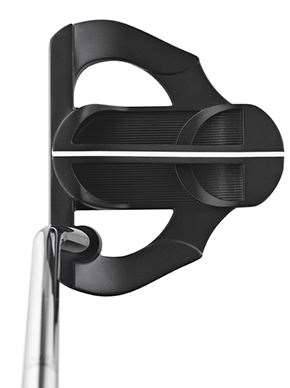 Heavy versions (black) add mass with a stainless steel insert to match slower-tempo strokes, and can lead to better results on shorter putts. Both face inserts feature the next generation of True Roll (TR) Technology grooves that provide forgiveness by normalising ball speeds across the face. They vary in depth and width from the centre of the face to significantly improve ball-speed consistency on putts of any length.
Heavy versions (black) add mass with a stainless steel insert to match slower-tempo strokes, and can lead to better results on shorter putts. Both face inserts feature the next generation of True Roll (TR) Technology grooves that provide forgiveness by normalising ball speeds across the face. They vary in depth and width from the centre of the face to significantly improve ball-speed consistency on putts of any length.
- Eight models, including four new designs (Anser W, B65, Tomcat C and Rustler) and a counter-balanced option (Anser 2 CB), are available to fit all stroke types (Straight, Slight Arc and Strong Arc). Each features a black PVD finish and white alignment lines. Weight differentiation in the high-moment of inertia Ketsch model is achieved with different 17-4 stainless steel sole plates that vary in thickness.
- All models are available with adjustable-length shafts.
RRP: $315 (Anser 2, Anser W, B65, Shea H, Tomcat C), $365 (Rustler, Craz-R).
Anser W
- High-moment of inertia blade, alignment line extends through face.
- Traditional, 350 grams; heavy, 375 grams.
- Slight Arc stroke type; lie angle +/- 4º.
Anser 2
- Blade, clean top rail and single alignment line.
- Traditional, 340 grams; heavy, 365 grams.
- Slight Arc stroke type; lie angle +/- 4º.
- Counter-balanced, 38-inch standard length, 50-gram counterweight, 17-inch grip.
- Traditional insert only, 400 grams.
- Slight Arc stroke type; lie angle +/- 4º.
B65
- Face-balanced blade, Anser-style hosel and rounded design, single alignment line.
- Traditional, 340 grams; heavy, 365 grams.
- Straight stroke type; lie angle +/- 4º.
Tomcat C
- Centre-shafted mid-mallet, sight line and ball-width alignment guides.
- Traditional, 355 grams; heavy, 380 grams.
- Straight stroke type; lie angle +/- 2º.
Shea H
- Heel-shafted mid-mallet, rounded shape with single alignment line.
- Traditional, 345 grams; heavy, 378 grams.
- Strong Arc stroke type; lie angle +/- 4º.
Rustler
- High-moment of inertia mallet with alignment line extending from top rail to back of putter.
- Traditional, 350 grams; heavy, 383 grams.
- Straight, Slight Arc, Strong Arc stroke types (achieved by different shaft bends); lie angle +/- 2º.
Ketsch
- Machined aluminium mallet, milled TR grooves, 17-4 SS sole plate, ball-width alignment aid extending from top rail to back of putter.
- Traditional, 355 grams; heavy, 383 grams.
- Straight, Slight Arc, Strong Arc stroke types (achieved by different shaft bends); lie angle +/- 2º.
Related Articles

2025 Spring & Summer fashion guide

Winner’s Bag: Xander Schauffele – Baycurrent Classic




